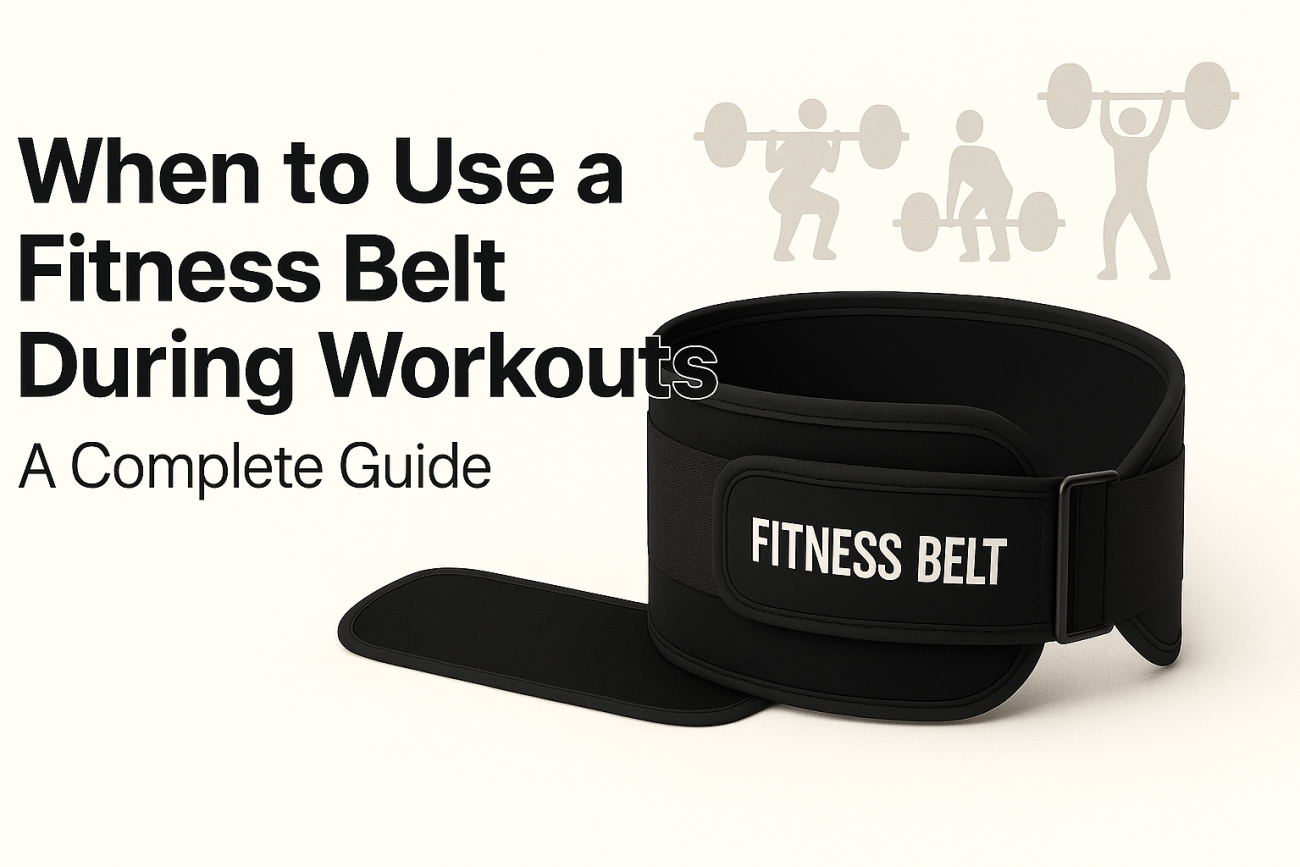The fitness belt, often referred to as a weightlifting belt or gym belt, is one of the most widely recognized accessories in gyms around the world. But confusion remains about when its use is truly necessary, what benefits it provides, and who should consider wearing one. In this comprehensive guide, we’ll address all your questions about when to use a fitness belt during workouts for optimal performance, safety, and results.
What Is a Fitness Belt?
A fitness belt is a thick, sturdy belt worn around the waist during exercise, primarily designed to stabilize and support the lower back and core during heavy lifting. Most commonly made from leather or reinforced synthetic materials, fitness belts come in various widths and thicknesses to suit different training needs.
Common Types of Fitness Belts
- Weightlifting Belts: Typically wider at the back and narrower at the front, providing targeted lumbar support.
- Powerlifting Belts: Uniformly wide belts that offer maximal support for powerlifting movements like squats and deadlifts.
- Velcro or Nylon Belts: Lighter and more flexible, suitable for general fitness or CrossFit workouts.
How Does a Fitness Belt Work?
The primary function of a fitness belt is to increase intra-abdominal pressure (IAP). When you brace your core and push your abdominal wall into the belt, this pressure acts like a natural weightlifting “corset,” supporting your spine and reducing the risk of injury.
Essentially, a belt provides a physical cue and additional bracing for your trunk, helping maintain proper alignment and form during heavy or strenuous lifts.
Benefits of Using a Fitness Belt
- Enhanced Core Stability: Boosts intra-abdominal pressure for a more stable core during heavy lifts.
- Spinal Support: Helps align and protect the lower back from excessive flexion or extension.
- Improved Lifting Performance: Many lifters report being able to lift heavier weights safely when using a belt.
- Injury Prevention: Reduces the likelihood of lower back strains during high-load movements.
When Should You Use a Fitness Belt?
While fitness belts offer notable benefits, they’re not meant for every set, rep, or exercise. Understanding when to use a fitness belt during workouts is crucial to maximize safety and effectiveness without developing over-reliance.
Best Scenarios for Using a Fitness Belt
- Heavy Compound Lifts:
- Belts are most beneficial during maximal or near-maximal lifts where spinal loading is highest. This typically includes:
- Barbell squats (especially above 80% of your one-rep max)
- Deadlifts
- Overhead presses
- Clean and jerks or snatches (for Olympic lifters)
- Low-Rep, High-Intensity Sets:
- When training with very heavy weights (1-5 reps per set), the risk of losing form and straining your back is higher. A fitness belt can help reinforce proper technique during these demanding efforts.
- Back Rehabilitation or Injury History:
- If you have a history of lower back injury or are returning to lifting after back rehabilitation, using a fitness belt can provide extra security. However, always consult your healthcare provider before resuming heavy lifting.
- Strongman or Powerlifting Competitions:
- Competitive strength athletes routinely use belts during competition and maximal training sessions to maximize performance and ensure safety under extreme loads.
When NOT to Use a Fitness Belt
- Light Weights or High-Rep Training:
- For lower weights, warm-up sets, or high-rep endurance training, a belt is usually unnecessary. Focus on developing natural core strength instead.
- Isolation Exercises:
- Movements that do not significantly load the spine, such as bicep curls, lateral raises, or leg extensions, do not require a belt.
- Developing Core Strength:
- Overuse of a fitness belt can inhibit natural core muscle development. Reserve belt use for the heaviest lifts and train your core without support during other exercises.
How to Use a Fitness Belt Correctly
Proper Placement
Position the belt snugly around your natural waist, usually just above your hip bones. The belt should be tight enough to provide resistance when you brace your core, but not so tight that it restricts breathing or movement.
Bracing Technique
- Inhale deeply, expanding your belly into the belt.
- Brace your abdominal muscles as if preparing to be punched.
- Maintain tension throughout the lift.
- Exhale only once you’ve completed the rep or are secure at the top.
Common Mistakes to Avoid
- Wearing the belt too loose or too tight
- Using the belt for every exercise, even when not needed
- Neglecting proper bracing and relying solely on the belt for support
Frequently Asked Questions About Fitness Belts
Will Wearing a Fitness Belt Weaken My Core?
If you use a belt only during your heaviest lifts and continue to train your core without assistance in other exercises, your core strength will not suffer. Problems arise only when the belt is overused.
Should Beginners Use a Fitness Belt?
Most beginners should focus on learning proper technique and building foundational strength before using a belt. Only as you progress to heavier weights should you consider belt use.
Are Fitness Belts Necessary?
Fitness belts are a tool, not a requirement. Many lifters achieve great strength and stability without one. Use it as an aid when appropriate, but don’t treat it as a substitute for good form and strong core muscles.
Conclusion: Use a Fitness Belt Wisely
A fitness belt can be a valuable addition to your workout gear, particularly for heavy compound lifts and high-intensity strength training. However, it’s important to understand when to use a fitness belt during workouts and to avoid over-reliance. Reserve its use for the most demanding sets, focus on proper bracing, and always prioritize technique and natural core development.
By using a fitness belt intelligently, you can enhance your performance, protect your back, and reach new levels of strength safely.
